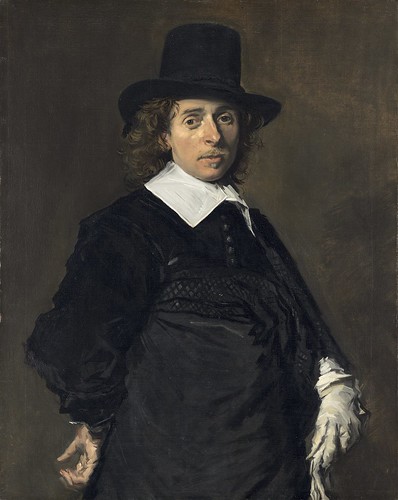Saturday, November 17, 2012
Jan de Bray and the Classical Tradition
Jan de Bray
A Couple Represented as Ulysses and Penelope, 1668
oil on canvas, 109.9 x 165.1 cm (43 1/4 x 65);
139.7 x 195.6 x 12.7 cm (55 x 77 x 5)
Collection of The Speed Art Museum, Louisville, Kentucky
17th-century Dutch artist Jan de Bray’s portrayal of contemporary individuals as historical figures was examined for the first time in Jan de Bray and the Classical Tradition, on view March 13 through August 14, 2005, at the National Gallery of Art, West Building. De Bray (c.1627-1697) was one of the foremost Dutch artists working in the classical tradition, a style of painting that in Holland fused naturalism with ideals of beauty. The focus exhibition included five paintings that demonstrate the artist's remarkable abilities in portraiture and the "portrait historié."
Also on view in this exhibition was a portrait by De Bray's Haarlem colleague, Frans Hals (c. 1582/1583-1666), and a work by the Flemish master Peter Paul Rubens (1577-1640), an artist who greatly inspired De Bray's classicizing tendencies.
The exhibition traveled to The Speed Art Museum, Louisville, Kentucky, where it was on view September 6 through December 4, 2005. The exhibition had been organized by the National Gallery of Art, Washington, and the Currier Museum of Art, Manchester, New Hampshire.
THE EXHIBITION
This focus exhibition explored the relationships between the portrait, the "portrait historié," and the classical tradition in De Bray's oeuvre. At its core was the juxtaposition of two of De Bray's major paintings, one in which he depicts his parents in overlapping profile portraits
Portrait of the Artist's Parents, Salomon de Bray and Anna Westerbaen (c. 1664),
and another in which the artist's parents assume the roles of Anthony and Cleopatra
Banquet of Antony and Cleopatra (1669).
In this latter painting, De Bray has included portrayals of himself, his wife, and siblings as part of the festive scene.
Among the other paintings by De Bray in the exhibition were Boy Holding a Basket of Fruit (1658), an early portrait by De Bray that reflects the relaxed poses and naturalistic style of the Haarlem master Hals;
A Couple Represented as Ulysses and Penelope (1668), (above) in which the artist and his wife gaze lovingly at each other;
and The Penitent Magdalene (1678), in which De Bray, who was Catholic, has depicted his third wife as Mary Magdalene, her namesake.
Also included in the exhibition, for comparative purposes, were two paintings from the Gallery's collection:
Hals' portrait of the painter Adriaen van Ostade (1646/1648),
and Rubens' Tiberius and Agrippina (c. 1614), since Rubens' classicizing image, which relates to the design of ancient cameos, may have influenced De Bray's portrayal of his parents. A final work in the exhibition is a portrait print of De Bray's father, also from the Gallery's collection.
De Bray was born into a creative, cultured family in Haarlem. His father, Salomon de Bray, with whom he presumably studied, was a painter and architect who helped establish the painter’s Guild of St. Luke in Haarlem in the 1630s. Salomon de Bray was also a poet and a member of a rhetorical society in the city. Jan’s mother, Anna Westerbaen, who came from an artistic family in The Hague, and two of Jan de Bray’s brothers, Dirck and Joseph, were also painters.
Tragedy struck the family when both of his parents and four of his siblings died in a plague. De Bray suffered further losses when all three of his wives died within a short time of the marriages. The paintings in the exhibition not only emphasized De Bray's skill in portraiture, but also revealed the artist's devotion to family members, who are memorialized in his work.


_-_WGA03122.jpg)

